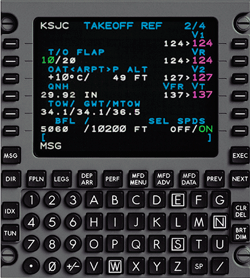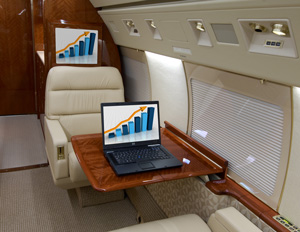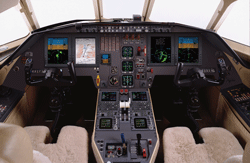Contributed by Justin Vena, Avionics Installation Sales Rep

Bottom Line: If you routinely fly in the world's oceanic routes, you want to be FANS and Link 2000+ compliant.
The Three major OEMS for business aircraft in operation within EASA airspace are exempt from the Link 2000+ mandate that takes affect after 2015 under Article 14. Basically, if you operate an out-of-production business aircraft in EASA airspace only and do not plan on traveling internationally, you are exempt from the Link 2000+ mandate. You will need to file an exemption request with EASA and obtain approval under Article 14. There are two articles of exemption, Article 1 aircraft are permanent exemptions and Article 2 are temporary exemptions.
Does my Business Aircraft have to comply with the Link 2000+ mandate to fly in EASA airspace after 2015?
The short answer is yes and no.
No. All non-production business aircraft in operation within EASA airspace are exempt from the Link 2000+ mandate that takes affect after 2015. Basically, if you operate an out-of-production business aircraft in EASA airspace only and do not plan on traveling internationally, you are exempt from the Link 2000+ mandate.
Yes. All current production model aircraft will have to comply with the Link 2000+ mandate after 2015.
Does my aircraft have to comply with the FANS mandate to fly in the North Atlantic Tracks after 2015?
Yes. The North Atlantic Tracks (NATs) are the fastest and most efficient routes between North America and EASA. After 2015, all aircraft flying the NAT must be FANS compliant.
Take note, the two center tracks of NAT will be closing to non-FANS compliant traffic by 2013.
International Travel Options
If you don’t want to pay the expense required to become FANS compliant, you are not totally without options. As stated above, by the end of 2013, ONLY the center two NAT tracks will become unavailable non-FANS aircraft. There are other routes available between North America and Europe. However, these routes are longer and have less than ideal conditions.
If you consistently fly these routes rather than the NAT, you will incur higher operating and maintenance costs associated with the added flight hours. Many aircraft will also require an aditional fuel stop for Atlantic crossings.
Best Equipped = Best Served
There are many oceanic routes around the world that, at the present time, do not require aircraft to be FANS compliant. However, they are beginning to adopt the “Best Equipped, Best Serviced” policy. It is not uncommon to hear of an aircraft having to sit on the runway waiting for clearance to take-off as other better-equipped aircraft are allowed to leave before them.
Duncan Aviation's team of avionic experts have compiled information to explain FANS 1/A, equipment, operational facts, benefits of the systems and regulation and certification in the easy-to-read ebook: Straight Talk About FANS. Download your copy here.
Justin will be attending European Business Aviation Convention and Exhibition (EBACE) in Geneva, Switzerland, from May 14 – 16. If you have any questions or want to talk about NextGen initiatives, schedule an appointment or stop by stand #456.
Justin Vena is an Avionics Installation Sales Rep at Duncan Aviation’s Battle, MI, facility. He specializes in NextGen Initiatives. His Aviation career began in 1988.










